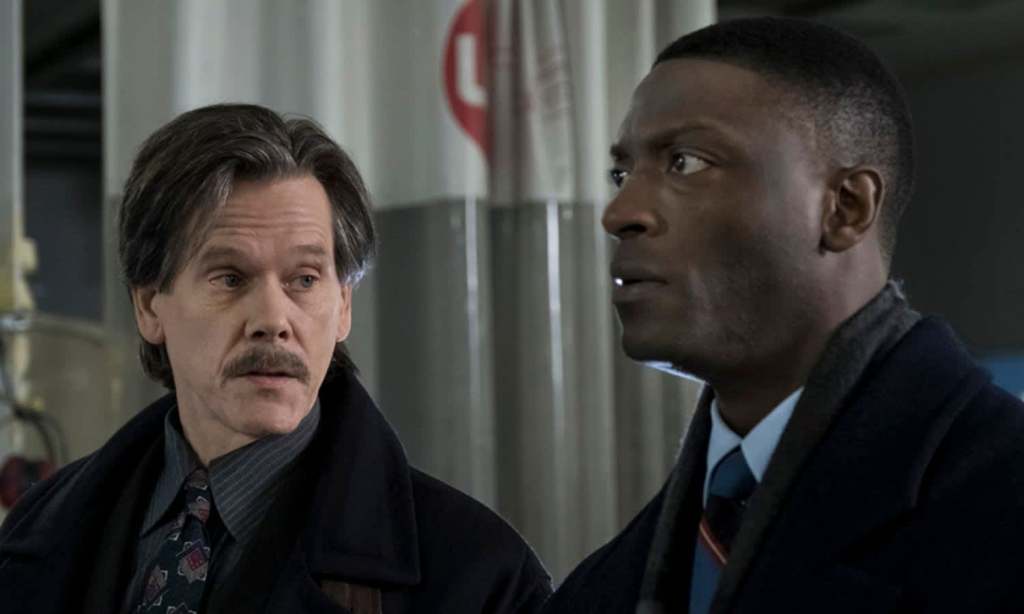Season two of Stan’s City on a Hill — starring Kevin Bacon and Aldis Hodge — focuses on
a federal housing project in the Roxbury neighbourhood of Boston that is plagued with drug violence and a rightful distrust in local law enforcement.
The gritty crime drama is set in Boston in the 1990s and explores a time when the city ran rampant with criminals and corruption. The drama is a fictional account of what was called the “Boston Miracle”.
But, What Was the Boston Miracle?
Despite sounding like it has something to do with the Boston Red Sox winning the world series against all odds, the Boston Miracle was actually a far more significant benchmark in America’s neverending battle with gun crime and violence.
In the late 1980s and early 1990s, Boston had a shockingly high number of youth gun homicides. While the city was not alone in experiencing this tragic phenomenon, it did see an alarming 230% rise in incidents from 22 victims in 1987 to 73 in 1990.
In an effort to counteract this trend, a coalition of Federal, State, and local governmental agencies, nonprofit community service organisations, businesses, religious leaders, parents, and resident stakeholders developed several programs to address the issue, to develop a series of public safety strategies, enforcement efforts and numerous prevention and intervention initiatives.
Operation Ceasefire
Interestingly, one of the programs that were implemented involved group therapy, of sorts. In fact, the tactics — as co-designed by criminology professor David Kennedy — are what are known today as group violence intervention or GVI.
Operation Ceasefire was established in May 1996 with the goal of communicating warnings to gangs that, if violence occurred, there would be a “swift, predictable response with weighty consequences.”
The strategy centred on communication and saw probationers attend mandatory meetings — facilitated by community members, law enforcement, and social service providers — in which the message was emphatically delivered to them that violence would no longer be tolerated in Boston.
The zero-tolerance message was not just for show either, with citizens who did not heed the warnings being met with the full force of the law if they did not comply. These arrests served as an example to other gang members who quickly realised they would face serious consequences if they perpetrated gun violence again.
Additionally, social services and assistance were offered to those who comply with the rules of non-violence, with incentives such as basic necessities for children or help with securing legitimate work on the table.
Given that the hotspots for youth homicide were typically poor inner-city neighbourhoods such as Roxbury — the same place where season two of City on a Hill is set — these were the areas where these strategies were introduced.
Boston Gun Project
Due to the fact that gun trafficking was an intrinsic part of the youth homicide problem, the initiative also targeted this area in order to essentially cut violent offenders off at the source.
The disruption of gun markets, swift Federal prosecution for gun possession or dealing, and the zero-tolerance message and enforcement measures of Operation Ceasefire were all used to reduce gun violence.
In particular, the swift Federal enforcement was believed to be a major deterrent for gun traffickers because Federal crimes carry longer sentences than most State gun crimes, and gang members feared being in a Federal correctional facilities.
Operation Night Light
Another “prong” to the strategy was Operation Night Light which began in 1992. This tactic saw probation officers team up with two police officers to make unannounced visits to the homes, schools, and workplaces of high-risk youth probationers between the hours of 7 pm and midnight.
During these visits, officers would discuss substance abuse prevention and treatment options with the probationers and their families.
The home visits were also thought to give at-risk juveniles a solid reason to stay inside at night rather than going out and getting swept up in street crime. Additionally, gang leaders were thought to be deterred from breaking curfew — a stalwart sanction of probation — under the threat of facing further charges and longer prison sentences.
So, What Was So Miraculous About These Programs?
In short, they worked.
Boston’s youth homicide rate fell by 63% and thereby was granted the nickname of the “Boston Miracle”.
The strategy has since been applied in 30 more American cities such as New Haven where youth homicides are down by almost 80% from 2011. The initiative has also gained the interest of several European countries, such as Sweden, while Glasgow in Scotland has implemented its own version that London mayor Sadiq Kahn has expressed a desire to emulate.
The ‘Boston Miracle’ is, understandably, often held up as a shining example of how gun violence can be mitigated when resources and support are poured into the right places and programmes and will likely prove crucial in America’s ongoing tug-of-war between its Second Amendment Rights and its citizens right to live.
Season two of City on a Hill is now streaming on Stan.
Read more stories from The Latch and subscribe to our email newsletter.







